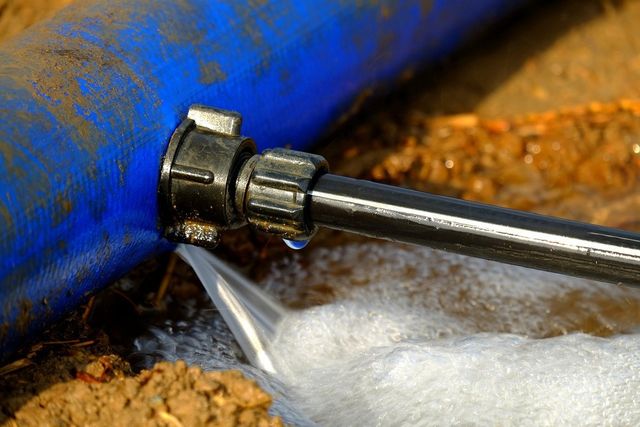Just how to Check If Your House Has a Covert Leakage
Just how to Check If Your House Has a Covert Leakage
Blog Article
Just about every person has their own unique perception when it comes to Hacks to detect leaks.

Early detection of dripping water lines can alleviate a possible calamity. Some small water leakages might not be noticeable.
1. Take A Look At the Water Meter
Checking it is a proven method that helps you find leakages. If it moves, that shows a fast-moving leakage. This indicates you might have a slow leakage that might also be below ground.
2. Examine Water Intake
Examine your water bills and track your water consumption. As the one paying it, you need to see if there are any inconsistencies. If you find sudden changes, despite your intake coinciding, it implies that you have leaks in your plumbing system. Remember, your water bill should fall under the same variety monthly. An unexpected spike in your bill shows a fast-moving leak.
A steady increase every month, also with the very same behaviors, shows you have a slow leak that's also slowly rising. Call a plumber to thoroughly examine your building, especially if you feel a cozy location on your flooring with piping underneath.
3. Do a Food Coloring Test
When it comes to water intake, 30% comes from bathrooms. If the color somehow infiltrates your bowl during that time without flushing, there's a leakage between the tank and dish.
4. Asses Exterior Lines
Do not fail to remember to examine your outdoor water lines too. Examination faucets by connecting a yard hose pipe. Needs to water permeate out of the connection, you have a loosened rubber gasket. Replace this as well as make sure all links are limited. If you've obtained a sprinkler system, it will certainly help get it skillfully analyzed as well as maintained every year. One little leak can waste tons of water and increase your water expense.
5. Evaluate and also Evaluate the Situation
Home owners ought to make it a habit to inspect under the sink counters and also even inside cabinets for any type of bad odor or mold growth. These two red flags indicate a leak so prompt focus is needed. Doing regular evaluations, also bi-annually, can save you from a major trouble.
If you know your home is currently old, maintain a careful eye on your heating systems, tubes, pipes and so on. Check for stainings and compromising as the majority of appliances and also pipes have a life expectancy. They will certainly likewise normally wear away as a result of tear as well as use. If you suspect leaking water lines in your plumbing system, do not await it to rise. Call an expert plumber as soon as possible so you do not end up with a dreadful mess in your house.
Early discovery of dripping water lines can minimize a potential catastrophe. Some tiny water leaks might not be visible. Examining it is a surefire means that assists you discover leaks. One tiny leakage can throw away lots of water and also surge your water bill.
If you suspect dripping water lines in your plumbing system, don't wait for it to rise.
WARNING SIGNS OF WATER LEAKAGE BEHIND THE WALL
PERSISTENT MUSTY ODORS
As water slowly drips from a leaky pipe inside the wall, flooring and sheetrock stay damp and develop an odor similar to wet cardboard. It generates a musty smell that can help you find hidden leaks.
MOLD IN UNUSUAL AREAS
Mold usually grows in wet areas like kitchens, baths and laundry rooms. If you spot the stuff on walls or baseboards in other rooms of the house, it’s a good indicator of undetected water leaks.
STAINS THAT GROW
When mold thrives around a leaky pipe, it sometimes takes hold on the inside surface of the affected wall. A growing stain on otherwise clean sheetrock is often your sign of a hidden plumbing problem.
PEELING OR BUBBLING WALLPAPER / PAINT
This clue is easy to miss in rooms that don’t get much use. When you see wallpaper separating along seams or paint bubbling or flaking off the wall, blame sheetrock that stays wet because of an undetected leak.
BUCKLED CEILINGS AND STAINED FLOORS
If ceilings or floors in bathrooms, kitchens or laundry areas develop structural problems, don’t rule out constant damp inside the walls. Wet sheetrock can affect adjacent framing, flooring and ceilings.
https://www.servicemasterbyzaba.com/blog/how-to-detect-water-leakage-in-walls/

We hope you liked our piece about Hacks to detect leaks. Many thanks for finding the time to read our short article. Don't hesitate to take the opportunity to distribute this entry if you enjoyed it. I praise you for your time. Kindly come by our blog back soon.
Report this page